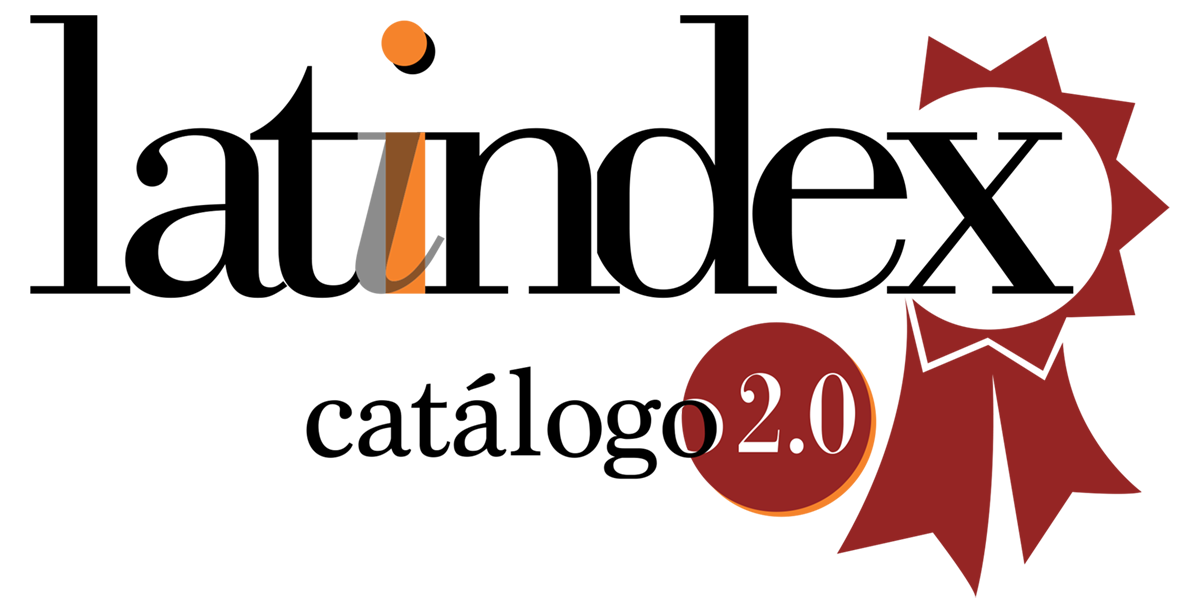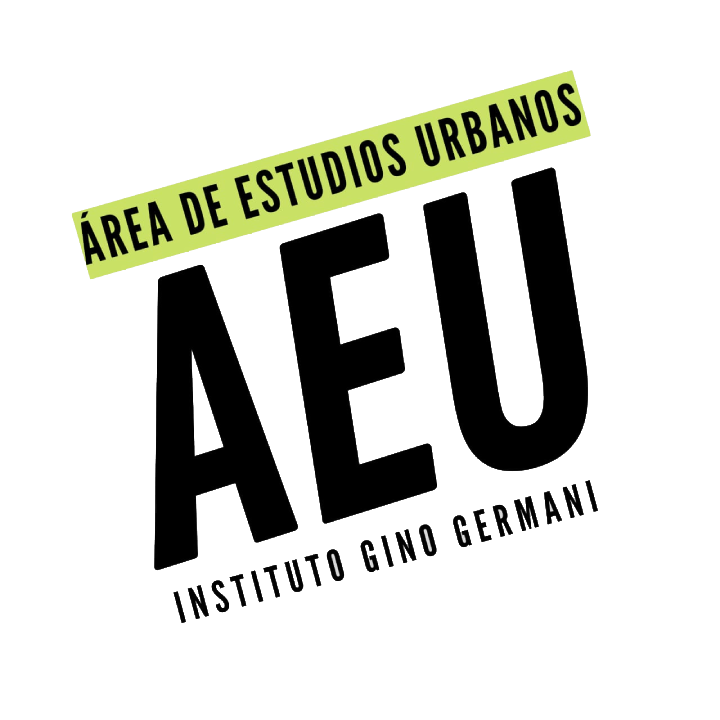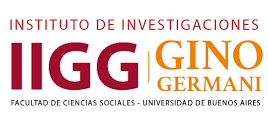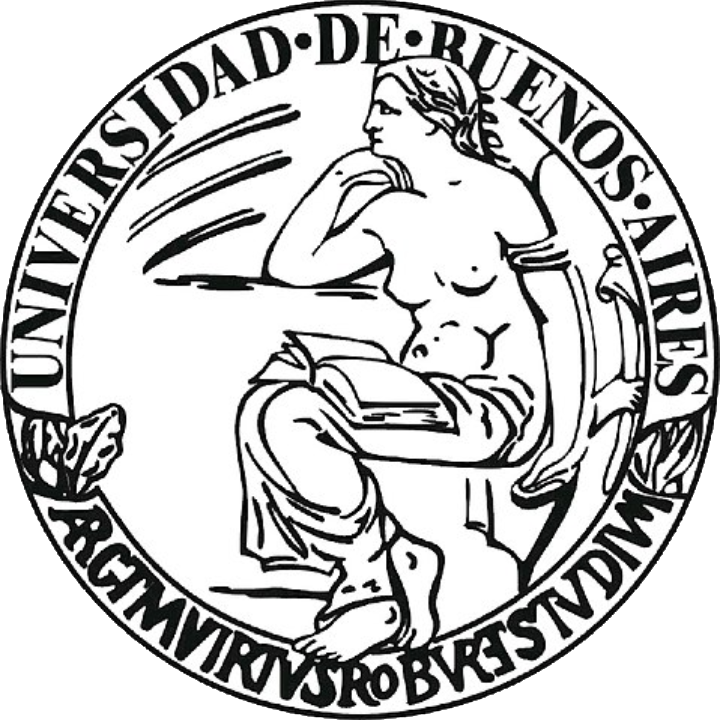Minería: ¿El Elixir de la Vida o la Fruta Prohibida? Un Examen Empírico de las Oportunidades y Amenazas de la Minería en Santo Domingo, Nicaragua: Una Comunidad Dividida Sobre la Minería.
Resumen
Durante las décadas 2000 y 2010, la investigación sobre la política de extracción de recursos se centró en campañas exitosas contra la extracción y enfatiza las fuentes de oposición a la minería. Con pocas excepciones, la investigación existente rara vez ha explorado actitudes a nivel individual relacionadas con la extracción de recursos. Partiendo de la beca anterior, y en base a datos originales de una encuesta de 2018 en Santo Domingo, Chontales, Nicaragua, rastreamos las fuentes de oposición y apoyo para la extracción de recursos a nivel individual en un contexto donde hay resistencia y apoyo a la minería para comprender las actitudes, creencias y características de los individuos en áreas donde hay movimientos de resistencia contra la minería. Nuestros resultados demuestran lo que hace que los ciudadanos de Santo Domingo participen en protestas extractivas al comprender qué factores los llevan a oponerse o apoyar la minería.
Texto completo:
PDFReferencias
ALMEIDA, Paul D. (2018). “The Role of Threat in Collective Action”. En David SNOW, Sarah SOULE, Hanspeter KRESI, & Holly MCCAMMON (eds.), Wiley- Blackwell Companion to Social Movements, Oxford: Wiley-Blackwell. 2nd Ed.
ARCE, Moisés. (2014). Resource Extraction and Protest in Peru. Pittsburgh: University of Pittsburgh Press.
ARCE, Moisés. (2015). “Resource Extraction, Political Fragmentation and Subnational Protest in Peru”. En Social Protests and Democratic Responsiveness: Assessing Realities in Latin America and the Caribbean and the European Union. Hamburg: EU-LAC Foundation.
ARCE, Moisés, & HENDRICKS, Michael. (2019). “Resource Wealth and Political Decentralization in Latin America”. Oxford Research Encyclopedia of Politics. Oxford University Press.
ARCE, Moisés, & MILLER, Rebecca. (2016). “Mineral Wealth and Protest in Sub-Saharan Africa”. African Studies Review, 59(3), pp. 83-105.
ARELLANO-YANGUAS, Javier. (2010). Local Politics, Conflict and Development in Peruvian Mining Regions. University of Sussex.
ARELLANO-YANGUAS, Javier. (2011). ¿Minería sin Fronteras?: Conflicto y Desarrollo en Regiones Mineras del Perú. Pontificia Universidad Católica del Perú.
AROCA, Javier. (2008). Defendiendo Derechos y Promoviendo Cambios: El Estado, Las Empresas Extractivas y Las Comunidades Locales en el Peru. Vol. 3 OXFAM Internacional.
ARTÍCULO 66. (16 enero, 2018). “Habitantes de Santo Domingo-Chontales rechazan nuevo proyecto de minería industrial.” Alianza Centro Americana Frente a la Mineria. Recuperado de http://acafremin.org/index.php?option=com_content&view=article&id=196:habitantes-de-santo-domingo-chontales-rechazan-nuevo-proyecto-de-mineria-industrial&catid=19&Itemid=101〈=en.
BANCO CENTRAL DE NICARAGUA. (2015). Anuario de Estadísticas Macroeconómicas (1960–2016): Sector Real, Empleo y Salarios, Sector Externo. Managua.
BEBBINGTON, Anthony, BEBBINGTON, Denise H., BURY, Jeffrey, LINGAN, Jeannet, MUÑOZ, Juan Pablo, & SCURRAH, Martin. (2008). “Mining and Social movements: Struggles Over Livelihood and Rural Territorial Development in the Andes”. World Development, 36(12), pp. 2888–2905.
BEBBINGTON, Anthony, BEBBINGTON, Denise H., BURY, Jeffrey. (2010). “Federating and Defending: Water, Territory and Extraction in the Andes”. Out of the Mainstream: Water Rights, Politics and Identity, pp. 307–327.
BEBBINGTON, Anthony. (2012). “Social Conflict and Emergent Institutions. Hypotheses from Piura Peru”. En Bebbington, A. (ed.), Extractive Industries, Social Conflict and Economic Development: Evidence from South America. London: Routledge.
BEBBINGTON, Anthony, & BURY, Jeffrey. (2013). Subterranean Struggles: New Dynamics of Mining, Oil, and Gas in Latin America. Austin: University of Texas Press.
BOND, Carol, & KIRSCH, Philipp. (2015). “Vulnerable Populations Affected by Mining: Predicting and Preventing Outbreaks of Physical Violence”. The Extractive Industries and Society, 2, pp. 552–561.
BURY, Jeffrey. (2002). “Livelihoods, Mining and Peasant Protests in the Peruvian Andes”. Journal of Latin American Geography, 1(1), pp. 1-19.
BURY, Jeffrey. (2005). “Mining Mountains: Neoliberalism, Land Tenure, Livelihoods, and the New Peruvian Mining Industry in Cajamarca”. Environment and Planning, 37(2), pp. 221–239.
CENTRO HUMBOLDT. (2015). En Santo Domingo, la ciudadanía promueve la defensa de su Derecho Humano al AGUA. Managua, Nicaragua: IBIS.
CONDE, Marta, & KALLIS, Giorgos. (2012). “The Global Uranium Rush and its Africa Frontier: Effects, Reactions and Social Movements in Namibia”. Global Environmental Change, 22, pp. 596- 610.
CONDE, Marta, & Le Billon, Philippe. (2017). “Why Do Some Communities Resist Mining Projects While Others Do Not?” The Extractive Industries and Society, 4, pp. 681-697.
DE ECHAVE, Jose. (2011). “La Minería Peruana y Los Escenarios de Transición”. Transiciones, 61.
DE ECHAVE, Jose, DIEZ, Alejandro, HUBER, Ludwig, REVESZ, Bruno, LANATA, Xavier Ricard, & TANAKA, MARTÍN. (2009). Minería y Conflicto Social. Instituto de Estudios Peruanos.
DIRECCIÓN GENERAL DE ENERGÍAS Y MINAS. (2017). Estadísticas Catastrales Mineras. Managua, Nicaragua. Recuperado de www.mem.gob.ni.
DIRECCIÓN GENERAL DE ENERGÍAS Y MINAS. (2014) Estadísticas. Managua, Nicaragua. Recuperado de www.mem.gob.ni.
DOUGHERTY, Michael. (2019). “How Does Development Mean? Attitudes toward Mining and the Social Meaning of Development in Guatemala”. Latin American Perspectives, 46(2,) pp. 1-21.
DOUGHERTY, Michael, & OLSEN, Tricia. (2014). “They Have Good Devices: Trust, Mining, and the Microsociology of Environmental Decision-making”. Journal of Cleaner Production, 84, pp. 183-192.
ECKSTEIN, David., KÜNZEL, Vera, & SCHÄFER, Laura. (2018). “Índice de riesgo climático global 2018. ¿Quiénes sufren más con los eventos climáticos extremos? Alemania, Germanwath”. (Disponible en: https://www.germanwatch.org/sites/germanwatch.org/files/publication/20398.pdf)
ECONOMIC COMMISSION FOR LATIN AMERICA AND THE CARIBBEAN. (2013). Natural Resources: Status and Trends Toward a Regional Development Agenda in Latin America and the Caribbean. Santiago, Chile: ECLAC.
EISENSTADT, Todd, & WEST, Karleen. (2017). “Public Opinion, Vulnerability, and Living with Extraction on Ecuador’s Oil Frontier: Where the Debate Between Development and Environmentalism Gets Personal”. Comparative Politics, 49(2), pp. 231-251.
ERIC. (2016). Impacto socioambiental de la Minería en la Región Noroccidental de Honduras, a la luz de tres estudios de casos: Montaña de Bataderos, Nueva Esperanza (Atlántida) y Locomapa (Yoro). Honduras.
EXNER, Andreas, LAUK, Christian, & ZITTEL, Werner. (2015). “Sold Futures? The Global Availability of Metals and Economic Growth at the Peripheries: Distribution and Regulation in a Degrowth Perspective”. Antipode, 47(2), pp. 342–359.
FRANKS, Daniel, DAVIS, Rachel, BEBBINGTON, Anthony, ALI, Saleem, KEMP, Deanna, & SCURRAH, Martin. (2014). “Conflict Translates Environmental and Social Risk into Business Costs”. Proc. Natl. Acad. Sci. U.S.A, 111(21), pp. 7576–7581.
FUNDACIÓN NICARAGÜNSE PARA EL DESARROLLO ECONÓMICO Y SOCIAL (FUNIDES). (2014). La minería en Nicaragua: importancia, desafíos y oportunidades. PowerPoint presentación por Chamorro, J. Director Ejecutivo, at Congreso Internacional de Minería, Managua, Nicaragua. (Disponible en: www.funides.com/documentos/eventos/2014/agosto/foro_mineria_12_agosto_2014.pdf.)
GAMU, Jonathan, LE BILLON, Philippe, & SPIEGEL, Samuel. (2015). “Extractive Industries and Poverty: A Review of Recent Findings and Linkage Mechanisms”. The Extractive Industries and Society, 2(1), pp. 162–176.
GIL, Vladimir. (2009). Aterrizaje Minero: Cultura, Conflicto, Negociaciones y Lecciones para el Desarrollo desde la Minería en Ancash, Peru. Instituto de Estudios Peruanos.
GLOBAL WITNESS. (2017). “Defender La Tierra: Asesinatos Globales de Defensores/as de la Tierra y el Medio Ambiente en 2016”.
GLOBAL WITNESS. (2018). “Activists, Defenders, Investigators: These are the Women Who Inspire Us.” (Disponible en: https://www.globalwitness.org/en/blog/activists-defenders-investigators-these-are-women-who-inspire-us/)
GOLDSTONE, Jack, & TILLY, Charles. (2001). “Threat (and Opportunity): Popular Action and State Response in the Dynamic of Contentious Action”. En AMINZADE, Ronald., GOLDSTONE, Jack, MCADAM, Doug, ELIZABETH, Perry, SWELL, William H., TARROW, SIDNEY, & TILLY, Charles (eds.), Silence and Voice in the Study of Contentious Politics. Cambridge: Cambridge University Press.
HASLAM, Paul, & TANIMOUNE, Nasser. (2016). “The Determinants of Social Conflict in the Latin American Mining Sector: New evidence with Quantitative Data”. World Development, 78(16), pp. 401-419.
INSTITUTO NACIONAL DE INFORMACIÓN DE DESARROLLO DE NICARAGUA (INIDES). (2005). Censo 2005.
INSTITUTO DE ESTUDIOS ESTRATÉGICOS Y POLÍTICAS PÚBLICAS (IEEPP), & CENTRO HUMBOLDT. (2017). La Minería Industrial en Nicaragua. Una mirada desde la óptica fiscal. Managua, Nicaragua.
JASPER, James. (1997). The Art of Moral Protest: Culture, Biography, and Creativity in Social Movements. Chicago: University of Chicago Press.
JOHNSON, Erik, & FRICKEL, Scott. (2011). “Ecological Threat and the Founding of U.S. National Environmental Movement Organizations, 1962-1998”. Social Problems, 58(3), pp. 305-329.
KIRSCH, Stuart. (2001). “Changing Views of Place and Time Along the Ok Tedi”. En WEINER, James, RUMSEY, Alan. (eds.), Myth to Minerals: Mining and Indigenous Lifeworlds in Australia and Papua New Guinea. Bathurst: Crawford Press.
LE BILLON, Philippe, & Sommerville, Melanie. (2016). “Landing Capital and Assembling ‘Investable Land’ in the Extractive and Agricultural sectors”. Geoforum.
MARTÍNEZ-ALIER, Joan. (2003). The Environmentalism of the Poor: A Study of Ecological Conflicts and Valuation. Edward Elgar Publishing.
MARTÍNEZ-ALIER, Joan, ANGUELOVSKI, Isabelle, BOND, Patrick, DEL BENE, Daniela, DEMARIA, Federico, GERBER, Julien-Francois, GREYL, Lucie, HAAS, Willi, HEALY, Hali, MARÍN-BURGOS, Victoria, OJO, Godwin, PORTO, Marcelo, RIJNHOUT, Leida, RODRÍGUEZ-LABAJOS, Beatriz, SPANGENBERG, Joachim, TEMPER, Leah, WARLENIUS, Rikard, & YÁNEZ, Ivonne. (2014). “Between Activism and Science: Gassroots Concepts for Sustainability Coined by Environmental Justice Organizations”. Journal of Political Ecology, 21, pp. 19-60.
MITCHELL, Michael. (2012). Interpreting and Visualizing Regression Models Using Stata. College Station, TX: Stata Press.
MOFFAT, Kieren, & ZHANG, Airong. (2014). “The Paths to Social License to Operate: An Integrative Model Explaining Community Acceptance of Mining”. Resources Policy, pp. 39, 61-70.
NAVAS Grettel, MINGORRIA, Sara, & AGUILAR-GONZÁLEZ, Bernardo. (2018). “Violence in Environmental Conflicts: The Need for a Multidimensional Approach”. Sustainability Science, 13(3), pp. 649-660.
ÖZKAYNAK, Begüm, RODRÍGUEZ-LABAJOS, Beatriz, & İSKENDER AYDIN, Cem. (2015). “Towards Environmental Justice Success in Mining Resistances: An Empirical Investigation”. EJOLT 14.
PÉREZ SOZA, Nomel. (2013). “In Six Years the Gold Will All Be Gone”. Envío. (Disponible en: http://www.envio.org.ni/articulo/4678).
PERREAULT, Tom. (2013). “Dispossession by Accumulation? Mining, Water and the Nature of Enclosure on the Bolivian Altiplano”. Antipode, 45(5), pp. 1050-1069.
PINARD, Maurice. (2011). Motivational Dimensions in Social Movements and Contentious Collective Action. Montreal: McGill-Queen’s University Press.
PONCE, Aldo, & MCCLINTOCK, Cynthia. (2014). “The Explosive Combination of Inefficient Local Bureaucracies and Mining Production: Evidence From Localized Societal Protests in Peru”. Latin American Politics and Society, 56(3), pp. 118-140.
PRONICARAGUA. (2013). Nicaragua: Discover the Mining Opportunities. Managua, Nicaragua
PRONICARAGUA. (2014). Nicaragua: ¡Crezcamos Juntos!. PowerPoint presentation by Javier Chamorro, Director Ejecutivo, at Congreso Internacional de Minería. Managua, Nicaragua.
SÁNCHEZ GONZÁLEZ, Mario. (2017). “The Rancho Grande Experience: Environmentalism in Rebellion”. Envío. (Disponible en: http://www.envio.org.ni/articulo/5383).
SALAS CARRENO, Guillermo. (2008). Dinámica Social y Minería: Familias Pastoras de Puna y la Presencia del Proyecto Antamina (1997-2002). Vol. 4 Instituto de Estudios Peruanos.
SILVA-MACHER, Jose-Carlos, & FARRELL, Katharine. (2014). “The Flow/Fund Model of Conga: Exploring the Anatomy of Environmental Conflicts at the Andes–Amazon Commodity Frontier”. Environmental Development and Sustainability, 16(3), pp. 747–768.
SNOW, David, CRESS, Daniel, DOWNEY, Liam, & JONES, Andrew. (1998). “Disrupting the ‘Quotidian’: Reconceptualizing the Relationship Between Breakdown and the Emergence of Collective Action”. Mobilization, 3(1), pp. 1-22.
SPALDING, Rose. (2015). Mining Booms and Mining Bans: Divergent Outcomes of Anti-Mining Movements in Nicaragua and Costa Rica. Papel presentado a International Congress of the Latin American Studies Association, San Juan, Puerto Rico.
SPALDING, Rose. (2016). Mining and Protest in Central America. Interpreting Alternative Outcomes. Papel presentado a International Congress of the Latin American Studies Association, New York, NY.
SPRONK, Susan, & WEBBER, Jeffery. (2007). “Struggles Against Accumulation by Dispossession in Bolivia: The Political Economy of Natural Resource Contention”. Latin American Perspectives, 34(2), pp. 31-47.
SVAMPA, Maristella., & ANTONELLI, Mirta. (2009). Minería Transnacional, Narrativas del Desarrollo y Resistencias Sociales. Buenos Aires: Editorial Biblos.
TARROW, Sidney. (1998). Power in Movement: Social Movements, Collective Action, and Politics. New York: Cambridge University Press.
URKIDI, Leire. (2010). “A Glocal Environmental Movement Against Gold Mining: Pascua-Lama in Chile”. Ecological Economics, 70(2), pp. 219-227.
VILLAFUERTE, Daniel. (2014). “Neoextractivismo, Megaproyectos y Conflictividad en Guatemala y Nicaragua”. Espiral (Guadalajara), 21(61), pp. 109-141.
WALTER, Martin. (2016). Extractivism in Latin America and the Caribbean: The Basics. Inter-American Development Bank Technical Note 907. Washington DC: Inter-American Development Bank.
WORLD TRADE ORGANIZATION. (2013). International Trade Statistics.
Enlaces refback
- No hay ningún enlace refback.
Estadísticas
Visitas al Resumen:369
PDF:138
Quid16. Revista del Área de Estudios Urbanos. ISSN: 2250-4060.
Los trabajos publicados en esta revista están bajo licencia Creative Commons Attribution 4.0 International.







